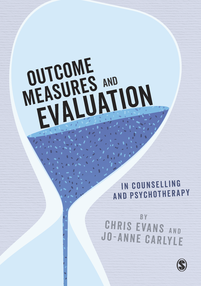This post is available in: English Italiano (Italian), there may also be a subsite in your language, see "Subsites" in the top menu.
Background
At the start of the pandemic some practitioners who had been using CORE forms on paper contacted CORE Information Management Systems (CIMS), and CST to ask if there were options for them to continue using CORE measures with clients despite moving from face to face working to online working in the current pandemic.
Various computer systems, including CIMS’s ones, offer the opportunity for practitioners to send Emails inviting online completion of measures and that’s completely free to any vendor to provide for CORE instruments in line with our Creative Commons licensing. However, those are sophisticated systems that cost time and money to create and maintain. As CST has always provided the instruments without charge, usually as PDFs for printing, we have never attempted to provide that
However, the coronavirus catastrophe created a huge need. With support I (CE) explored free options as described next. We believe these to offer a range of appropriate solutions for these times. Please read and digest the issues below before jumping to any one option.
Confidentiality and options
The confidentiality issue turns on informed consent: using Email to contact clients carries a theoretical, but small, risk that the Email could be intercepted and reveal that the client is in therapy. However, if the Email reveals nothing more, many clients are totally happy to consent to this. Returning completed measucontact formres by Email carries the same small, but not zero risk of interception and clearly could reveal much more than just that the client is in therapy. We believe that using Google forms to present the CORE measure(s) you have been using to your clients overcomes this as they complete the forms on an encrypted web interface.
Option 1: Google forms
Sadly it proved impossible to ensure data security, given way Google handles data protection when sharing forms (a terrible design) and also down, frankly, to the misbehaviour of some who took up this option so eventually I removed it (22/4/20).
Option 2: fillable PDF forms returned by Email
However, if you are sure you can’t do the steps to do that, you may want to use fillable PDF forms. You can send these by Email and the client fills them in and sends them back to you. Make sure they understand that there is a tiny, but not zero, risk of interception: that is your responsibility ethically and legally. You would be wise to make a note in the client record that the client was informed of the risk and agreed. If you want to use that route the information is here.
Option 3: Microsoft forms (replacing Google forms option but…)
The “but…” is that you have to have the right licence for Microsoft office to be able to use these but read on here.
Option 4: MarBar (for Spanish speakers)
MarBar (https://www.marbarsystem.com/) has been created in UDLA (Universidad de Las Américas) by Professor Clara Paz with a little input from me. The seed funding came from the Marna Barratt award of the Society for Psychotherapy Research. MarBar allows online completion of CORE-OM and CORE-10 by clients or practitioners as well selected CORE-A data from practitioners. It is free but designed to promote collaboration and network building so you need to join with at least one other colleague. I recommend it and yes, we will be looking to see if we can find funding to create an English language version and, perhaps, other translations.
Wildcard options: LimeSurvey and Qualtrics
In the unlikely event that you have access, perhaps through collaboration with clinical or counselling psychology trainings at your local university, or a university therapy or counselling training you may know, you might be able to use LimeSurvey or Qualtrics online survey systems. Sadly of course, even if you do have links with a university that uses one of those systems, it is horribly likely that their IT support staff will be completely overloaded at this time. Just a wildcard option. Details of the forms at
https://www.coresystemtrust.org.uk/home/downloads/limesurvey-files-for-core-instruments/
and
https://www.coresystemtrust.org.uk/home/downloads/qualtrics-qsf-files-for-core-instruments/.
Support for these options
All these forms are provided with no warranties at all. In legal terms you are the data controller with sensitive personal data using them. However, don’t be scared by that, you already were in that position if you used paper forms. Do tell me of problems with any of them (and good experiences too please!) If you can write or video better guidance on using than I have, send me it or point me to it. I’ll happily link to it as I know I’m not good and howtos, help documents and the video instructions were a completely new experience for me. Use the contact form to contact me and please realise that I may take a week to get back to you, particularly if there are many responses.
Back in 2020 I had little time to alpha test these options. I had used LimeSurvey for research for some years with mostly good experiences. I have also used Qualtrics, a commercial equivalent of LimeSurvey which can also be trusted. I welcome feedback if you use these but can’t offer to support you with them. The Google forms option had to be withdrawn sadly (see above), I have not returned to it since (6/3/23) to see if Google have changed what seems to me to be an utterly mad data sharing setting which goes with sharing their forms. If someone can confirm that they have, I would reinstate them as they were a good option. The Microsoft forms are a good option but costly unless someone is already paying for the correct licence. I don’t have that so can’t provide any help at all with that. I don’t like the fillable PDFs because of the confidentiality issues but it seems clear that many people are using them successfully.
Software asking for a password to enter data into a fillable PDF
I occasionally get messages telling me that clients seem to need a password to enter their data. This happens because the client is unlucky and is using some software to fill the forms that is assuming that they don’t want to fill them but want to edit them. The forms are locked to prevent that but of course set to be fillable. I have never been able to get to the bottom of why some software seems misconfigured in this way and there’s essentially nothing I can do about it so if this bites you or your clients, do contact me and tell me and if stick with me, we might get a bit further identifying the issues. So far literally no-one has stuck through to telling me what software was broken and what then worked so I have no end user experience to draw on!
Retirement of related ResearchGate project March 2023
I had used a ResearchGate project for fairly rapidly updated information about this work. RG are retiring all projects on 31.iii.23 so I have archived it here for anyone who wants to see that historical record.
Created 25/3/20, latest update 7/3/23 adding MarBar, RG archive and summary of the fillable PDF issue; author CE & header image (Chartres, France) CE; licence for text and image: Attribution 4.0 International (CC BY 4.0)..



